Activities
Enhancing Policies to Attract and Improve the Quality of FDI Inflows
Published
10 months agoon
Foreign Direct Investment (FDI) is a crucial source of capital contributing to Vietnam’s economic development. In recent years, amid changes in both domestic and international economic landscapes, Vietnam has been strategically reforming its institutional and policy framework to enhance FDI attraction and efficiency. Mr. Do Van Su, Deputy Director of the Foreign Investment Agency under the Ministry of Planning and Investment, shared his insights with Economic and Forecast Magazine on this topic.
Interviewer (IV): Vietnam’s legal framework for FDI attraction has undergone multiple reforms and is considered competitive compared to other countries. Could you highlight the key features of Vietnam’s current FDI policies?
Mr. Do Van Su: In response to the evolving domestic and global economic landscape, Vietnam has committed to strategic policy adjustments to enhance FDI attraction and quality. The legal framework has been refined and formalized through various legal documents. Notably, for the first time in over 30 years of opening its economy to foreign investment, the Politburo issued Resolution No. 50-NQ/TW, outlining directions for improving the institutional and policy framework to enhance the quality and effectiveness of foreign investment cooperation by 2030. This resolution emphasizes a selective approach to FDI, prioritizing quality, efficiency, technology, and environmental protection as key evaluation criteria. Vietnam focuses on attracting projects involving advanced technology, new and high-tech innovations, clean technology, modern governance, high added value, and those that promote supply chain connectivity and global production networks.
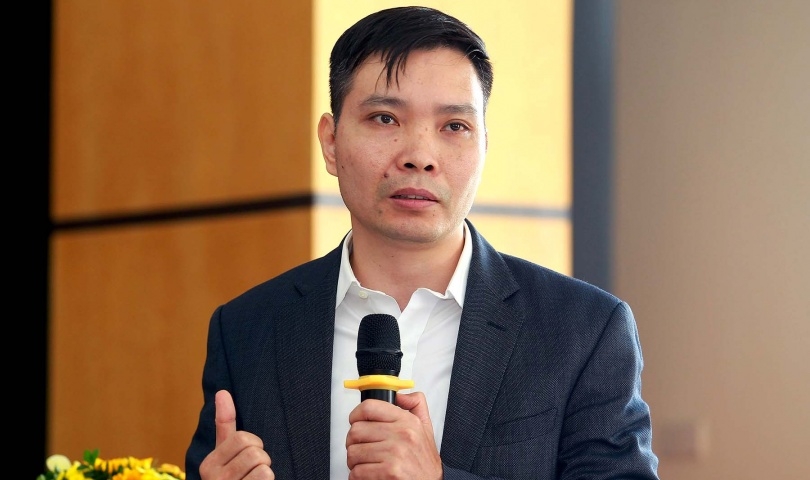
To implement the directives and objectives of Resolution No. 50-NQ/TW, the Prime Minister issued Decision No. 667/QD-TTg, approving Vietnam’s Foreign Investment Cooperation Strategy for 2021-2030. This strategy outlines key tasks and solutions, including:
- Improving the business investment environment and enhancing economic competitiveness.
- Developing an ecosystem for science, technology, and innovation.
- Innovating and increasing competitiveness in FDI attraction.
- Promoting supporting industries and fostering linkages.
- Leveraging internal strengths and competitive advantages to improve FDI effectiveness.
- Enhancing international economic integration and Vietnam’s global standing.
- Modernizing and diversifying investment promotion efforts.
Recently, with the global minimum tax set to take effect on January 1, 2024, the National Assembly has mandated the Government to issue a Decree establishing, managing, and utilizing an Investment Support Fund, introducing a new investment support approach aligned with current needs.
IV: What are the tangible benefits Vietnam has gained from these well-structured policies in attracting FDI?
Mr. Do Van Su: Despite global and regional economic challenges and risks, alongside significant restructuring in investment flows, Vietnam’s proactive, decisive, and timely policies have helped maintain macroeconomic stability and achieve positive FDI growth. Notable achievements include:
- Registered FDI capital reaching $496.7 billion, with implemented capital nearly $318.9 billion, placing Vietnam among the top 20 FDI destinations worldwide.
- A more open and favorable investment environment, aligning with domestic socio-economic conditions and international economic integration requirements.
- A significant contribution from the FDI sector to Vietnam’s economic and social development, accounting for 25% of total social investment, over 50% of industrial production value, nearly 75% of export value, and more than 27% of state budget revenue, while creating over six million direct jobs.
- Vietnam’s economy has risen to the top 40 globally in scale and is among the top 20 in global trade, playing a vital role in 17 free trade agreements (FTAs) covering 60 key global economies.
- FDI flows have continued shifting towards high-tech, large-scale projects, particularly in electronics, semiconductors, and advanced manufacturing industries.
- Foreign investment continues to integrate Vietnam into the global economy, enhancing its credibility as a safe and attractive destination for investors. Vietnam has signed 17 FTAs, including next-generation agreements such as CPTPP, EVFTA, and RCEP, securing free trade relationships with over 60 countries, including major markets worldwide.
IV: What key lessons has Vietnam learned from implementing its FDI attraction policies, and what are the future strategic directions?
Mr. Do Van Su: Key lessons from Vietnam’s FDI attraction policies include:
- Strong leadership from the Party, Government, and Prime Minister has elevated Vietnam’s global standing and investor confidence.
- A comprehensive and competitive FDI legal framework is crucial for attracting investment and ensuring a favorable business environment.
- Consistently improving the business climate and addressing challenges for investors have enhanced Vietnam’s investment appeal.
- Providing essential investor requirements—high-quality human resources, well-developed industrial infrastructure, supporting industries, and streamlined administrative procedures—is vital for attracting major investors.
- Timely policies and measures are necessary to turn challenges into opportunities, particularly regarding global investment shifts and the reallocation of major corporations’ production bases.
Future FDI attraction strategies will focus on prioritizing projects with advanced, high-tech innovations, modern governance, high added value, and strong linkages to domestic industries and global supply chains. Targeted investment attraction will prioritize strategic regions, partners, and industries such as:
- Science, technology, and innovation; research and development.
- Green economy, digital economy, circular economy, and knowledge economy.
- Semiconductor manufacturing, new energy (e.g., hydrogen), and renewable energy.
- Green finance and financial hubs.
- Biotechnology and healthcare.
- Electronic components and electric vehicles.
IV: How is Vietnam establishing investment screening mechanisms to attract high-quality FDI inflows?
Mr. Do Van Su: Following Resolution No. 50-NQ/TW, the Ministry of Planning and Investment has developed two key evaluation frameworks:
- FDI Effectiveness Assessment Criteria (7 indicators): Investment scale, labor impact, technology, technology transfer, linkages and spillover effects, environmental impact, and national security.
- Selective FDI Attraction Criteria (42 indicators): Economic indicators (29), social indicators (8), and environmental indicators (5).
These frameworks are designed to analyze and assess FDI effectiveness, provide standardized comparisons across ministries and localities, support government decision-making, and screen high-quality investments with high added value and global supply chain integration.
IV: Given the intense competition for FDI, especially in the semiconductor industry, how is Vietnam positioning itself in the global supply chain?
Mr. Do Van Su: Amid global supply chain diversification and geopolitical shifts, Vietnam is emerging as an attractive destination for semiconductor investment due to:
- A highly skilled yet cost-competitive workforce.
- Significant investments in infrastructure upgrades.
- Favorable and transparent policies.
- Strong political commitment and leadership.
Vietnam has taken decisive actions, including:
- Establishing the National Steering Committee for Semiconductor Industry Development, led by the Prime Minister.
- Preparing essential infrastructure:
- Implementing workforce development and semiconductor industry strategies.
- Drafting a Government Decree on an Investment Support Fund with breakthrough incentives for semiconductor firms.
- Enhancing industrial infrastructure and clean land availability.
- Accelerating major transport projects for regional and international connectivity.
- Facilitating investment procedures through a dedicated task force and streamlined processes for semiconductor projects in high-tech and economic zones.

You may like
-


New standards being reached within green industrial parks
-
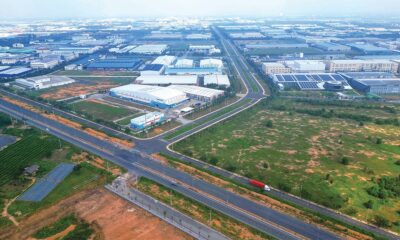

Land rent cuts aim for positive impact on business health
-
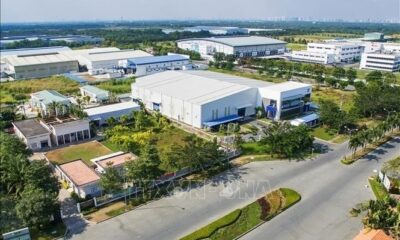

Industrial real estate expects a boost from policies, FDI
-


Hanoi’s serviced apartment sector benefits from surging FDI
-
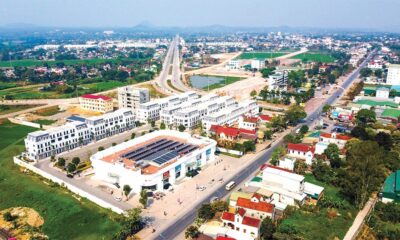

Nghe An aiming for double-digit growth in 2025
-


FDI flows to Ho Chi Minh City hit $365 million in first two months
Activities
HoREA Proposes Allowing Businesses to Build Worker Housing Inside Industrial Parks
Published
8 months agoon
March 31, 2025The Ho Chi Minh City Real Estate Association (HoREA) has proposed a pilot mechanism that would allow businesses to invest in and construct worker housing within industrial parks.
In a document submitted to the Prime Minister, contributing feedback on a draft pilot policy aimed at boosting social housing development, HoREA suggested that businesses, cooperatives, and cooperative unions operating within industrial parks be permitted to build accommodation for their workers. It also called for allowing companies to rent housing outside industrial parks for the same purpose.
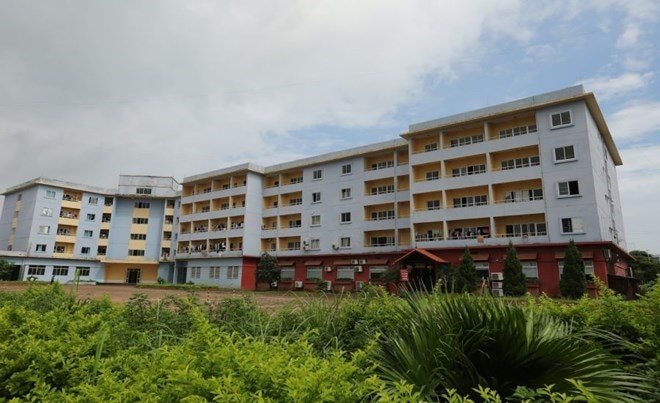
HoREA emphasized that all costs related to building or renting worker housing should be recognized as legitimate business expenses and be included in the enterprise’s operating costs.
The association further recommended expanding the policy framework to allow companies within industrial parks to lease social housing or worker accommodation built by third-party developers outside the park premises.
According to Mr. Lê Hoàng Châu, Chairman of HoREA, the current Housing Law (2023) only allows companies to rent worker housing inside industrial parks, without clearly defining whether they can rent social housing outside the parks or construct such housing themselves.
With worker housing demand at industrial parks far exceeding supply, HoREA pointed out that current social housing and dormitory offerings are inadequate. Meanwhile, commercial housing remains out of reach for most workers due to high prices. Therefore, the association urges the government to introduce policies enabling manufacturing businesses—despite not operating in real estate—to develop their own accommodation solutions for employees.
HoREA underscored that such policies would create a strong legal foundation, empowering enterprises and cooperatives to proactively resolve housing issues for workers. If allowed to construct their own housing, companies could ensure homes go to those in need, boosting employee retention, improving living standards, and supporting sustainable growth in industrial zones.
The association also proposed financial support mechanisms, including tax incentives, access to preferential loans, or government-matching support, to reduce the financial burden on companies participating in worker housing development.
Previously, many businesses had expressed a desire to buy land, build housing, and offer installment-based homeownership plans to workers, whereby employees would pay monthly through salary deductions. While this model helps workers secure long-term housing, legal procedures remain a major hurdle.
Providing accommodation has increasingly become part of corporate strategies to retain labor, alongside other employee welfare policies. For example, Nissei Electric Vietnam (Linh Trung 1 Export Processing Zone, Thu Duc City) has built a dormitory complex with 285 shared rooms, housing up to 2,280 workers. Eternal Prowess Vietnam (District 12) and Thien Phat Company (Linh Trung 2 EPZ) have also invested in on-site worker housing. Thien Phat’s project includes 368 units (35m² each), rented at VND 2.2 million/month, with 80% of the units for families and 20% for shared accommodations.
As of Q2 2024, Ho Chi Minh City has 18 industrial parks with around 1,700 businesses employing approximately 320,000 workers. Citywide, over 1.3 million people are employed in factories. However, there are only 16 official worker housing complexes, accommodating about 22,000 people. The majority of workers rely on rented rooms or stay with acquaintances—often sharing 12m² rooms among 2–3 people, which consumes 15–20% of their monthly income.
From 2021 to the present, Ho Chi Minh City has completed six social housing projects with 2,700 units and is building four more with 3,000 units. By April 30, the city aims to resolve legal hurdles and break ground on 5–6 additional social housing projects, totaling around 8,000 units.
Activities
Vietnam’s leading developer Becamex IDC targets $825 mln from ‘historic’ share offering
Published
10 months agoon
February 11, 2025Becamex IDC Corp, a leading eco-industrial and urban real estate developer in Vietnam, plans to raise nearly VND20.88 trillion ($825 million) from a public offering of 300 million shares on the Ho Chi Minh Stock Exchange (HoSE), equivalent to its current equity.
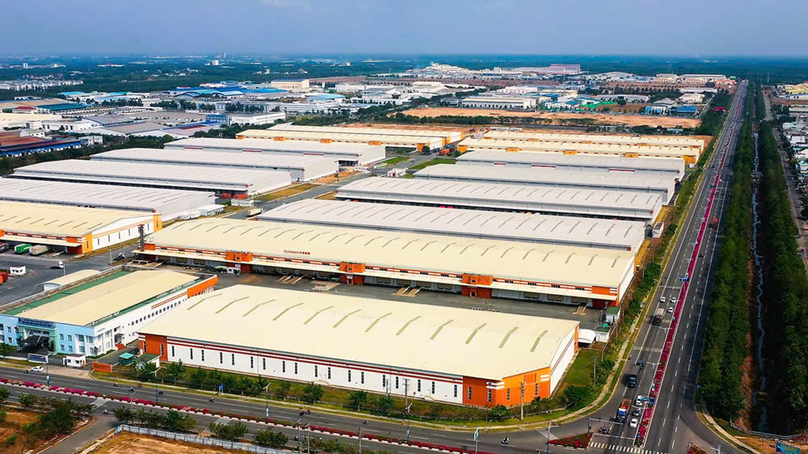
An industrial park developed by Becamex IDC. Photo courtesy of the company.
The corporation has approved the starting price of VND69,593 ($2.75) for the public auction of its BCM shares on the HoSE, aiming for VND20.88 trillion, nearly 40% higher than the initial expected value.
This offering is considered the largest since the state-owned capital divestment boom from 2016 to 2018.
The offering price is almost five times the book value of the stock at the consolidated financial statement for Q4/2024 and the average of the last 30 trading sessions prior to February 6, 2025 on the HoSE.
At the end of 2024, the company’s charter capital was VND10.35 trillion ($408.93 million), and equity was VND20.48 trillion ($809.2 million). If the capital raising is successful, its charter capital will increase to VND13.35 trillion, and equity will double to over VND41 trillion.
Becamex IDC, a giant in the industrial real estate sector in the southern province of Binh Duong, seeks to raise funds to invest in projects such as the Cay Truong Industrial Park and the expanded Bau Bang Industrial Park, as well as to contribute capital to existing companies, including Vietnam-Singapore Industrial Park J.V. Co. Ltd. (VSIP), Becamex Binh Phuoc Infrastructure Development JSC, Becamex VSIP Power Investment and Development JSC (BVP), Vietnam-Singapore Smart Energy Solutions JSC (VSSES), and Becamex Binh Dinh JSC. It also plans to restructure its finances.
Currently, the largest shareholder of the company is the People’s Committee of Binh Duong province, with a 95.44% stake. If the auction is successful, the state’s ownership will drop to 74%.
In the stock market, BCM moved counter to the VN-Index, steadily declining from VND87,000 ($3.44) per share at the end of 2022 to VND51,000 per share in April 2024. However, while the VN-Index stagnated, the ticker rebounded and closed at VND70,000 per share on Friday, up 37.2%.
The stock’s growth momentum slowed in the last quarter of the previous year due to a decline in business results. Specifically, in Q4/2024, Becamex IDC reported a sharp 60% decrease in revenue to VND2 trillion ($79 million).
Despite joint venture activities doubling profits to VND1.19 trillion, its after-tax profit still decreased by 33% to VND1.37 trillion ($54.13 million). For the whole year, its net revenue fell by 35% to VND5.2 trillion, and net profit dropped 12.5% to VND2.1 trillion.
Expansion ambition from 2024 to 2028
The corporation mainly operates in the fields of industrial park infrastructure investment, urban development, services, and trade. It is the developer of six industrial parks in Binh Duong province, covering a total land area of 2,931 hectares with an occupancy rate of 88%. The firm is also finalizing legal procedures to put the 700-hectare Cay Truong Industrial Park into operation in 2025.
In addition, Becamex IDC has expanded its reach to other localities outside Binh Duong, such as Binh Phuoc, Tay Ninh, Khanh Hoa, Quang Ngai, Thua Thien-Hue, Thanh Hoa, Nam Dinh, Ninh Binh and Hai Duong provinces, and Hai Phong city. The firm has also received in-principle approvals for four more industrial parks in Lang Son, Thai Binh, Binh Thuan, and Ha Tinh provinces.
Besides industrial parks, Becamex IDC has also developed urban and service areas such as the My Phuoc Residential Area, Thoi Hoa Residential Area, and Bau Bang Residential Area. The corporation plans to allocate resources for high-impact commercial projects like the WTC Exhibition Center, WTC Tower, and WTC Gateway cultural-central station complex in New Binh Duong town.
Moreover, the company, together with Singapore’s Sembcorp Industries, has developed the Vietnam-Singapore Industrial Park (VSIP) model, featuring an innovation center in an industrial-urban-service complex including a business incubator, advanced manufacturing center, and renewable energy research center.
These strategies will be implemented from 2024 to 2028, with a vision towards 2030. To achieve these goals, the company plans to increase its charter capital if necessary, borrow from credit institutions, and issue bonds.
Becamex IDC currently has total liabilities of VND38.3 trillion ($1.51 billion), with short-term debt of VND7.9 trillion and long-term debt of VND15.72 trillion. Its debt-to-equity ratio is 1.1 times.
Activities
Japan-invested solar cell maker Vietnam Sunergy to start $30 mln plant from June
Published
10 months agoon
February 11, 2025Japan-invested Vietnam Sunergy Wafer, a manufacturer of solar cells, plans to start official production at its $30 million factory in Hung Yen province from June.
The firm aims to complete administrative procedures in May and then install equipment in June, according to a recent project report. The plant covers 2.65 hectares in Minh Quang Industrial Park of the northern province.
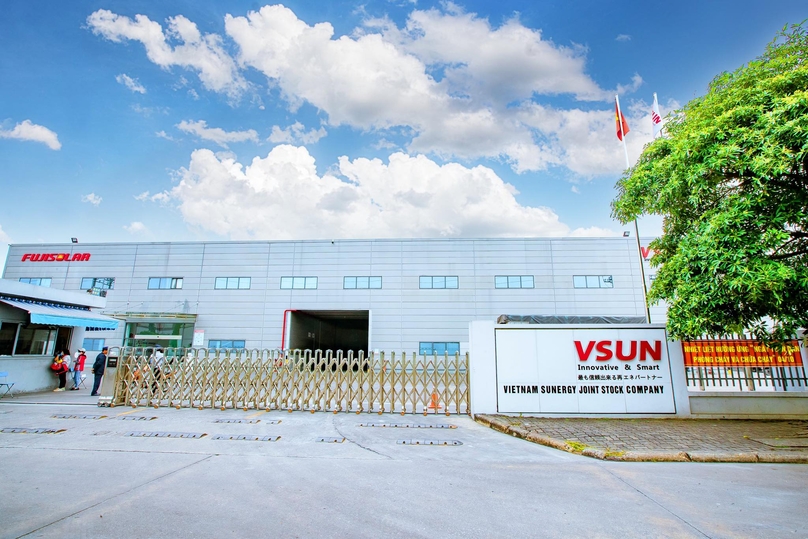
A factory of Vietnam Sunergy JSC. Photo courtesy of VSUN Solar Vietnam.
The project has an annual capacity of 600 million silicon wafers, a component of solar cells, equivalent to 9,375 tons. It is set to employ 1,000 people.
Hung Yen recorded registered foreign direct investment (FDI) of $1.5 billion in 71 projects in 2024, the highest-ever figure in terms of capital, according to provincial data.
The province, a neighbor of Hanoi, has so far attracted FDI of $8.5 billion. It now has 17 industrial parks in its masterplan, covering 4,395 hectares. Of these, 10 facilities are now operational.

Bac Giang International Logistics Centre launched

Vietnam’s Exclusive Economic Zone boasts over 1,000 GW of wind power potential: report

Uncertainty weighing on real estate

Central Vietnam city seeks $1.84 bln for 15 projects in economic zone
